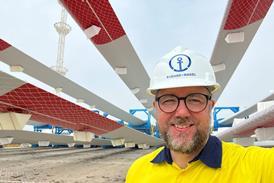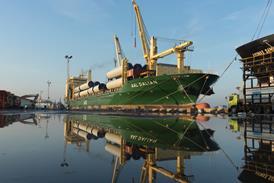David Kershaw discusses the Caribbean’s prospects, and pitfalls, with CMA CGM – a container shipping giant that is increasingly targeting heavy and oversize cargoes.

The Caribbean region comprises some 700 individual islands that are politically, economically and geographically diverse.
Stéphane Berninet, head of CMA CGM’s project cargo division, highlighted that the shipping line has a longstanding presence across the Caribbean, and it has been strengthening its regional project cargo team in the area.
“We have enjoyed strong growth by securing various spot project cargo shipments, both intra-Caribbean as well as to and from other regions,” he said. “In the Caribbean region, we are currently operating ten intra-American and feeder services, coupled with eight main liner services from North Europe, the Mediterranean, Asia and the west coast of South America.” The 2,300-10,000 teu ships connect to each other in Kingston (Jamaica), Cartagena (Colombia) and Port of Spain (Trinidad), providing clients with multiple weekly departures and ready availability.
Healthy business
Given the region’s geopolitical and economic diversity, Berninet said each individual country moves to its own rhythm, with pockets of opportunity arising. “Our project cargo teams, mainly the ones based in Miami and in our head office in Marseille, are keeping very busy,” he said. “Cargo traffic from the US East Coast to the Caribbean remains healthy, with out-of-gauge volume increases to the whole region, particularly in the construction, energy and mining sectors, from yellow goods and construction machinery (cranes, dumpers, lift trucks), and heavy transformers to XXL tyre supply for the mining industry. The leisure and commercial boats segment is also substantial.
“On the eastern part of the Caribbean, both the oil and gas and the aerospace industries are instrumental to our project cargo business. Intra-Caribbean cargoes are also continuously developing.”
Being a massive archipelago, the region’s ports are a crucial part of the logistics landscape. Berninet said CMA CGM has built strong relationships with the region’s container terminals. “Kingston Freeport Terminal is ideally located at the heart of our Caribbean network, and offers a lifting capacity up to 75 tonnes; Cartagena SPRC/CONTECAR can handle up to 165 tonnes in a tandem lift; MIT Panama is able to consider loads up to 180 tonnes; and in Trinidad we can access the use of a 500-tonne capacity truck crane.”
He added that, by and large, its terminals are “extremely supportive, and our processes ensure that these operations are prepared in detail and are closely monitored. The track-record in terms of regularity, reliability and safety speaks for itself.”
Nevertheless, he said the region’s terminals need to invest in proper lifting equipment to position themselves for what comes next in terms of non-containerised cargo, heavy lift and oversized cargoes, while maintaining a focus on efficiency, productivity and operational excellence.
Recent projects
Among recent projects, CMA CGM has moved transformers from Cartagena (Colombia) to Paramaribo (Suriname); a mining truck from Caucedo (Dominican Republic) to San Antonio (Chile); wind turbine blades from Marseille (France) to Saint John’s (Antigua); motor boats from Antwerp (Belgium) to Cartagena; and a pilot simulator from Jebel Ali (UAE) to Puerto Cabello (Venezuela).
“Overall, we are very optimistic about prospects for 2020,” added Berninet.
“CMA CGM’s edge, as a container liner, is to provide numerous and regular services crossing each other in the region,as well as having feedering services ... including long-term schedules to plan shipments well in advance.”
This article is taken from HLPFI’s January/February 2020 edition.
















